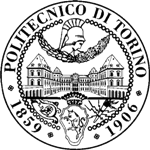Italy
Ecological flows assessment in the Aosta Valley
In collaboration with Compagnia Valdostana delle Acque (CVA) and Regione Autonoma Valle d'Aosta, the project aims to assess the Ecological Flows for 28 water abstractions in the Aosta Valley. Meso-scale habitat modelling (MesoHABSIM) will be used to quantify habitat availability for aquatic fauna.
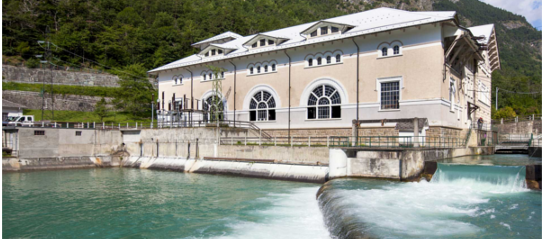
RIBES: RIver flow regulation, fish BEhaviour and Status
RIBES (River flow regulation, fish BEhaviour and Status) European Training Network (ETN) will train 15 ESRs in the interdisciplinary field of Ecohydraulics to find innovative solutions for freshwater fish protection and river continuity restoration in anthropogenically altered rivers. The RIBES project has been funded under the European Union Horizon 2020 Research and Innovation Programme, has a duration of 4 years, from January 2020 to December 2023.
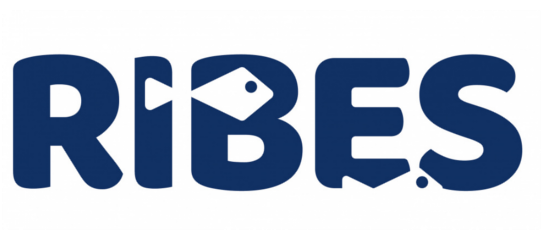
BenhHab Project - Meso-scale habitat modelling for macroinvertebrates
The BenhHab Project aims at establishing the basis for the application of mesoscale habitat modelling for aquatic macroinvertebrates, through by testing the effect of microhabitat (flow velocity, water depth and substrate), mesohabitat (riffles, glides, backwaters and isolated ponds) and spatial position on macroinvertebrate community variability.
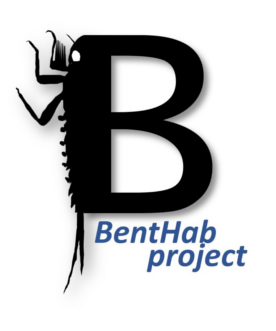
Multivariate spatial analyses were used to analyze macroinvertebrate data collected in theTrebbia, Taro and Enza Rivers (Northern Italy). The mesohabitat scale seems a good spatial resolution to predict for macroinvertebrate distribution, with a clear differentiation in community composition. Collectively, the outcomes of the present project highlight a transferability of results across mesohabitats, supporting the use of meso-scale modelling for macroinvertebrate distribution in braided rivers.
PITEM Biodiv'ALP - Manage biodiversity areas by harmonizing the management methods of Alpine protected areas
The PITEM Biodiv'ALP Project is based on two strategic objectives aimed at reducing habitat loss of protected species and improving the attractiveness of the cross-border territory between Italy and France.
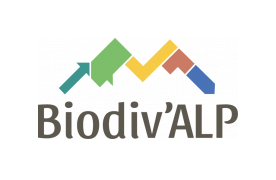
The latter contributes in particular to the ALCOTRA programme on biodiversity, and to the European strategy for the Alpine Macro-region.
FHARMOR - Fish habitat in Alpine rivers: integrating monitoring, modelling and remote sensing
The FHARMOR project aimed to predict the spatial and temporal patterns of meso-scale habitat for selected fish species of particular management and conservation interest, like grayling (Thymallus thymallus) and marble trout (Salmo marmoratus). The project team is interdisciplinary and is composed of hydraulic engineers and experts in remote sensing of rivers (University of Innsbruck), hydrologists and geomorphologists (Free University of Bozen-Bolzano), experts in eco-hydraulics and modellers of river hydro- and morphodynamics (University of Trento) together with experts in river habitat modelling (Polytechnic University of Torino).
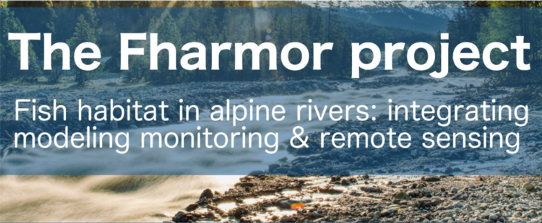
EuroFLOW: European training and research network for environmental flow management
EUROFLOW will address the need to develop novel scientific understanding for the field of e-flows via four inter-related scientific work-packages: (i) abiotic environment dynamics, (ii) aquatic biodiversity, (iii) ecosystem processes and (iv) developing models to underpin socio-economic and policy decision making, integrating information from i-iii.
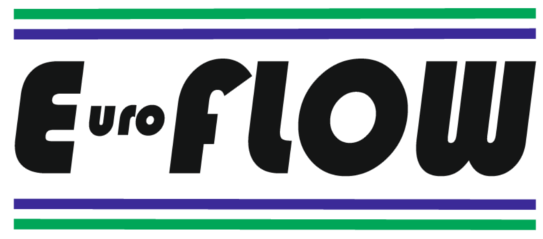
Assessment of water temperature scenarios in European rivers
In collaboration with the Joint Research Centre of the European Commission, an intensive literature review has been carried out to define what are the European freshwater fish species that will be most affected by future water temperature changes.
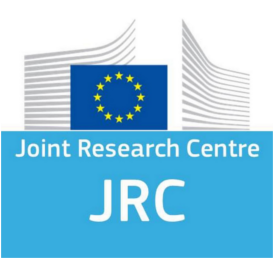
In European rivers there are more than 540 fish species and it will be crucial to understand which species, or local populations, will suffer major changes in habitat availability due to water temperature modifications. Particular attention has been given to threatened species or species that are listed in the European Habitat Directive.
ResEAU Research Unit - Research for Acquatic Ecosystems
The purpose of the ResEAU Research Unit is to build a research network specialized in the management and protection of aquatic ecosystems by implementing advanced and innovative procedures for data collection and processing (including small Unmanned Aircraft Vehicles) and developing methods and tools to support the sustainable management of water resources.

ResEAU involves pubic institutions and private companies into a multidisciplinary research group, which will operate at both national and international level. The project is supported by the European Regional Development Fund and the European Social Fund. The most important national and international collaborations include the Italian Center for River Restoration (CIRF), the Rushing Rivers Institute (MA, USA), the United State Geological Survey, Fort Collins Science Center (CO, USA) and the Karlstad University (Sweden).


Conservation and recovery of Austropotamobius pallipes in Italian Natura 2000 sites
The CRAINat project provides for the implementation of specific actions for the protection and conservation on the species Austropotamobius pallipes (also known with its common name of white clawed crayfish), species in a high conservation priority, included in Annexes II and V of Directive 92/43/EEC "Habitat". The project is carried out at the same time in two geographical areas, northern Italy (Lombardy Region) and central Italy (Abruzzo Region, Provinces of Chieti and Isernia and National Park of Gran Sasso and Monti della Laga).

In addition to reconnaissance of the watercourses in the SCI of Lombardy, Abruzzo and Molise territories, activities will be carried out on genetic characterization, monitoring actions and containment of non-native species, maintenance actions, habitat restoration and e-flows assessment, as well as specific actions to spread young individuals in suitable surface water bodies. The project involves several partners and it is scientifically supervised by the Univ. of Pavia (Prof. Pietro Angelo Nardi, Dr. Gianluca Fea and Dr. Daniela Ghia)
More information on the CRAINat project web page: http://www.lifecrainat.eu/en/project.php

Advanced methodologies for the protection and environmental management of aquatic ecosystems in Alpine streams and lakes
This technological transfer project was leaded by the Politecnico di Torino (Prof. Claudio Comoglio) to apply and test advanced radio-telemetry techniques to monitor fish movement and migration in stream and lakes, to support the environmental protection and restoration of aquatic ecosystems in the Alps. Specific applications were carried out in protected natural areas to support biodiversity conservation and a sustainable use of ecosystem services.

Restoration of rivers longitudinal connectivity for fish migration - Dora Baltea river basin, Valle d'Aosta, Italy
We carried out a telemetry study to assess the mobility, habitat preferences, growth and mortality for brown trout (Salmo trutta fario) and marble trout (Salmo trutta marmoratus), through fish capture (electrofishing) and radio-tracking (manual and automatic) in Dora Baltea River (within reaches with and without habitat restoration measures) and in Marmore and Urtier Streams (mountainous environment > 1400 m a.s.l.). The project was supervised by Prof. Claudio Comoglio (Politecnico di Torino, Italy) with the collaboration of Dr. Olle Calles (Karlstad Univ., Sweden), Dr. Michele Spairani (FLUME Srl, Italy) and Dr. Daniele Stellin (Regione Valle d'Aosta, Italy)
![]()
River longitudinal continuity rehabilitation and monitoring for Chiusella and Pesio Streams, Piedmont, Italy
The Project aimed at verifyng the effectiveness of fish passes in the Chiusella and Pesio Streams, Piedmont (Italy), monitoring by pit-tags and radio tracking and upstream and downstream fish capture. The projects were supervised by Prof. Claudio Comoglio (Politecnico di Torino, Italy) and Prof. Gilberto Forneris (Univ. of Torino, Italy) with the collaboration of Dr. Olle Calles (Karlstad Univ., Sweden) and Dr. Michele Spairani (FLUME Srl, Italy)

Environmental flows assessment for catchments smaller than 50 km2, Piedmont, Italy
In the context of the regional water protection plan, we studied the definition of environmental flows at a regional scale. Logistic regression models along with 55 habitat descriptors were used to build the multivariate habitat suitability criteria, identifying the habitat characteristics mostly used by target fishes. The biological models were applied to streams and changes in habitat area were predicted over a range of discharges by building the habitat-flow rating curve. To define regional criteria for environmental flows, the study domain was split according to the environmental requirements of fish communities.

Mesohabitat preferences for Leuciscus lucumonis in Malacqua stream, La Spezia, Italy
Mesohabitat preferences for Leuciscus lucumonis (Etrurian chub) were defined through hydro-morphological data collection and fish sampling at different flows. The project was supervised by Prof. Claudio Comoglio (Politecnico di Torino, Italy) in collaboration with Dr. Luca Ciuffardi (Univ. of Genova), Dr. Olle Calles (Karlstad Univ., Sweden) and Dr. Michele Spairani (FLUME Srl, Italy)

Spain
Ecological quality of the Albufera lagoon (Valencia)
The water system of the Albufera Natural park was monitored to assess the ecological status of aquatic habitats. This assessment was carried out through the measurement of physical-chemical and biological parameters in the rice fields around the Albufera lagoon.
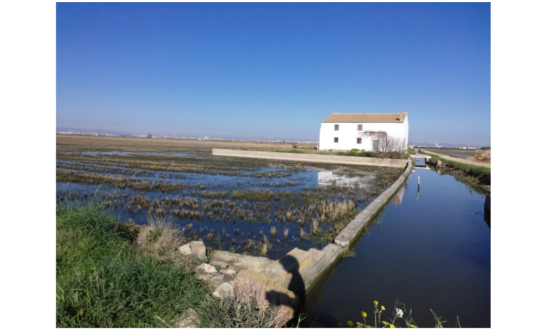
Assessment of ecological flows in Catalunya
Starting from January 2021, the project "Monitoring the implementation of environmental flows and updating of flows for the next planning cycles" has been carried out to monitor and evaluate the ecological benefits of ecological flows releases from dams in Catalonian river basins
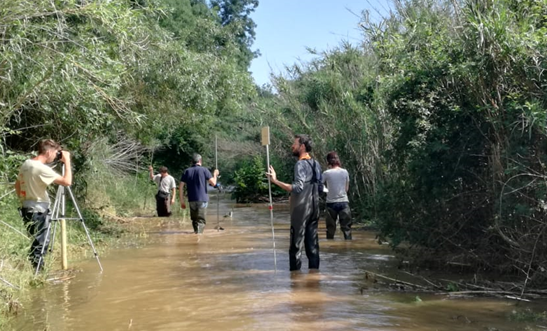
Latvia
LIFE GOODWATER IP: Implementation of River Basin Management Plans of Latvia towards good surface water status
The overall aim of LIFE GoodWater IP is to improve the status of water bodies at risk in Latvia by means of the full implementation of the measures laid down in the Daugava, Gauja, Lielupe and Venta River Basin Management Plans (RBMPs). The Politecnico di Torino will contribute to the project by developing a web modelling platform for the MesoHABSIM model application and the definition of Ecological Flows in Latvian rivers.

UK
Vaccinating the Nexus
Vaccinating the Nexus is a prestigious EPSRC Programme Grant that will focus on improving the resilience of water, energy and food systems. It will investigate how nexus ‘shocks’, such as extreme climatic events that cause flooding, drought, energy shortages or unsustainable infrastructure development, may help inform the development of more environmentally sustainable and secure systems. This project will be divided into three work packages. source: http://nexus.soton.ac.uk/vaccinating-the-nexus/

Sweden
Nature like design of fish-passes as habitats for both animals and plants, Eldforsen, Sweden
The project aims to create a nature like passage not only for fish but also for other species. The main purpose is to investigate the colonization of species and how species composition changes over time. The Eldbäcken project "Bio-kanal" will provide habitats for both animals and plants. The project is directed by Dr. Olle Calles (Karlstad Univ., Sweden) with the collaboration of the Department of Territory, Environment and Geo-engineering of the Politecnico di Torino, Italy

Depth references of down-stream migrating silver eels in Alster River, Sweden
The project aims to study the depth preferences of silver eels during the downstream migration and the passage through hydropower plants in Alster River. The project is directed by Dr. Olle Calles (Karlstad Univ., Sweden) with the collaboration of the Department of Territory, Environment and Geo-engineering of the Politecnico di Torino, Italy

The re-opening of the old river-bed at Herting power station: improving the opportunities for fish passage from sea to source, Ätran River, Sweden
Herting project aims to improve the opportunities for fish passage from sea to Ätran River source. The study species are salmon, eel and sea lamprey but the restoration measures can benefit all present species. The project is directed by Dr. Olle Calles (Karlstad Univ., Sweden) with the collaboration of the Department of Territory, Environment and Geo-engineering of the Politecnico di Torino, Italy

The impact of hydroelectric power plants and restoration of fish migration routes in River Emån, Sweden
In Emån project the impact of hydroelectric plants on fish migration is studied. The target species are sea trout, salmon and chub. The project is directed by Dr. Olle Calles (Karlstad Univ., Sweden) with the collaboration of the Department of Territory, Environment and Geo-engineering of the Politecnico di Torino, Italy

Mediterranean Area
[HolRiverMed] - Environmental River Management: An Innovative Holistic Approach for Mediterranean Streams
HolRiverMed consisted of a structured two-years research program hosted by the Universidad Politecnica de Valencia (Spain) and it was mainly focused on models and methods for a sustainable water resources management. The project was funded by the European Union through its Seventh Framework Programme. In particular, HolRiverMed was part of the 2010 Marie Curie Intra-European Fellowships for the mobility of European researchers.

In order to develop such models and methods for the management and conservation of Mediterranean riverine ecosystems, the analysis was carried out in a structured multidisciplinary approach among hydraulics, hydrology, ecology and biology, as it is typical in the field of eco-hydraulics. The project was based on the meso-scale (or meso-habitat) resolution to reveal spatio-ecological patterns and describe the whole river system properties, and considered different taxonomic and functional groups to describe the biological response to hydro-morphological alterations. Environmental standards and critical habitat values leading the environmental stress were defined by seasonal rules, which use habitat persistence as a metric rather than flow alone.
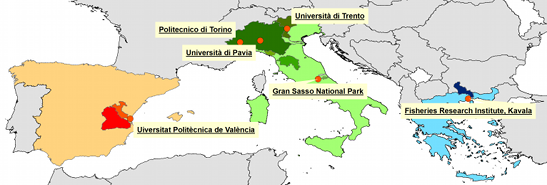
The project involved universities and research institutes across the Mediterranean area and included several case studies in Spain (Jucar and Turia river basins), Italy (Po, Adige, Arno, Magra-Vara, Tordino and Saline river basins) and Greece (Nestos river basin). Project activities were carried out thanks to the ongoing collaborations with several researchers and the support of local authorities.
